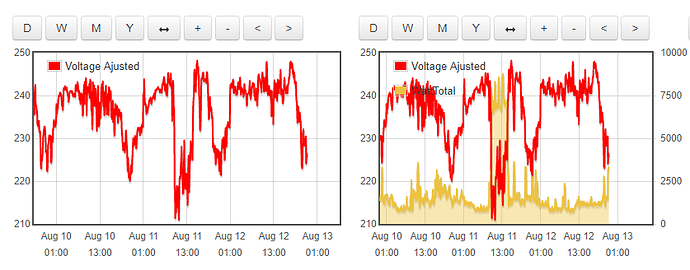That answers one question but poses another two.
What is your reason for the ESP8266 on the emonPi? The emonPi (if it’s a modern Pi) has internal WiFi and an Ethernet connection.
I.E, they are not updating. Do you also have a 5 V d.c USB supply to the emonTx? That is necessary if you have an ESP8266, because WiFi needs far more current than the a.c. adapter can supply without damaging the shape of the a.c. wave it’s measuring. Without it, the emonTx will fail to operate. That could explain the absence of a set-up page.
If you need to know real power, then yes they do - because the calculation is done some 50 times per mains cycle, and you can’t transfer the data between them that quickly. So they can’t share one. If you’re content with apparent power only and not knowing the direction of power flow, they can share the voltage, but you then need to correct the “power” readings by scaling from the assumed 230 V to the actual voltage.
By not measuring the garage power at the house end, you’re not accounting for cable losses, but my guess - and it’s only a guess - is that may easily be outweighed by the inaccuracy in having apparent power only. If you have the a.c. adapter in the garage, you can account for cable losses (but you might need to carefully calibrate the whole system to measure it accurately).
The way you’ve drawn it, you have a Type 1 system - but instead of 1 c.t. as shown in the guide, the “CT1” shown there needs to be the sum of your c.t’s 1, 2, A, B & D. “CT2” is your c.t. C.
Therefore, on the 'Inputs" page of emonCMS, you’ll need to add those 5 together into one feed, and c.t. C will be another. Once you get past the “quick” setup, the manual setup in the guide gives details of how to name those two resulting feeds and configure emonCMS - and that’s what you need to look at. What you do with all the other inputs is at your discretion, but I guess you’ll want to separate out the EVs, for example, and record their consumption separately.






